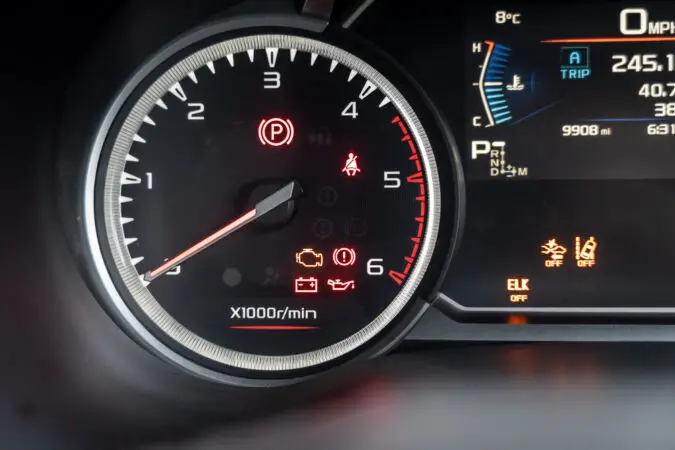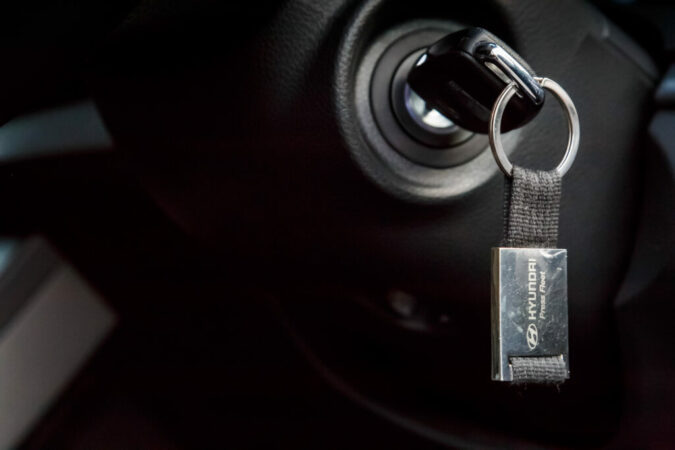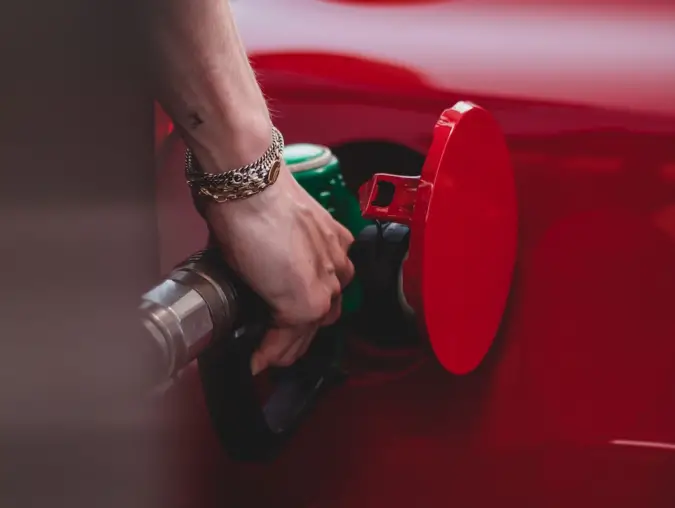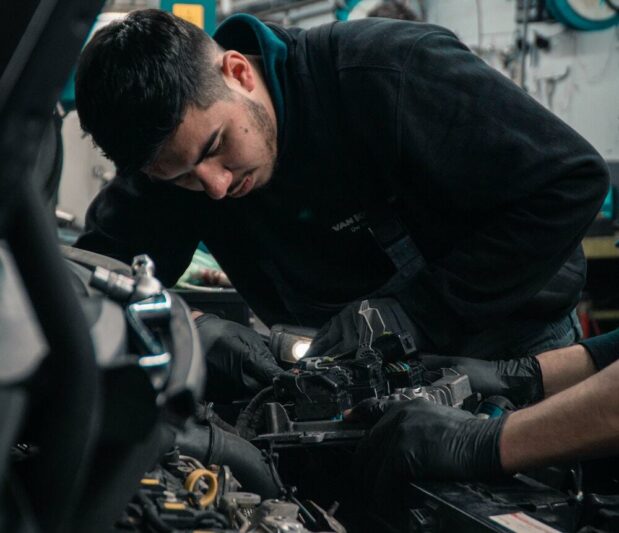Have you gotten the check engine light and a purge valve solenoid code? So, you are looking for the cost to replace purge valve? Well, if that is the case, then you are at the right place because there will be quite a bit to cover on this topic and we are going to learn all you need to know when it comes to solving this problem.
- What Is The EVAP System
- How Does It Work
- Purge Valve
- Location
- Diagram
- Common Symptoms
- Diagnosing
- Replacement Cost
- Final Conclusion
- FAQs
Learning how to troubleshoot is probably one of the top priorities that you should learn in order to uncover problems on your car quickly and solve them in a speedy manner. Especially when it comes to issues with the purge valve.
The purge valve if you didn’t know is a rather notorious component when it comes to failing. This component just loves to fail and cause all sorts of issues. The most common issue is the check engine light. So, this is why you need to put up your sleeves and understand more about the purpose of this valve and also how to diagnose and replace it. But you shouldn’t worry because we are going to help you out.
First, we are going to learn what is the EVAP system and how this system works on your car. Then we will discuss the purge solenoid. We will learn more about its location, diagram, and trouble codes that it develops. As well as the symptoms associated with this component. Then, we will take a look at how to diagnose, replace, and the cost to replace purge valve and how expensive it is. So, if you want to learn more, follow along.
What Is The EVAP System
Now before we dive into more complex topics and understand the cost to replace purge valve. Let’s first take a look at the system in which this purge valve is installed. Knowing how everything works should be your top priority when it comes to sorting out problems with your car. This is why we are going to elaborate on everything in detail in the following chapters.
So, what is an EVAP system? Well, the EVAP acronym stands for Evaporative Emission Control System. But what does this mean?
Well, this means that this system is an emission system that is installed on your car. This system was created back in the day in order to tackle pollution. But how this system prevents pollution?
Well, when you pour gas into your gas tank, the gas immediately starts to evaporate. And these gases are rather harmful to our health.
We cannot see them. But we can certainly smell them. Just remember the smell when you put gas in your tank at the gas station. The smell of gas is basically evaporative fume that is escaping from the filler neck of your car.
And what the EVAP system does is prevent these gases from escaping into the atmosphere and redirecting them back into the engine to burn. But how does this system works in detail? Let’s elaborate more on that before we learn about the cost to replace purge valve.
How Does The EVAP System Work
So, we covered what the EVAP system is and learned that this is an emissions control system (to learn more about emissions control, head over to our guide on do all cars have a catalytic converter). Now let’s take a look at how this system works behind the curtain. So, let’s explain the mode of operation of this system in your car.
The EVAP system is a system that is composed of your fuel tank, fuel cap, EVAP charcoal canister, purge valve, and vent valve or the EVAP solenoid. And in addition to this, there are a ton of rubber hoses that run through this system.
The core of this system is the charcoal canister. This charcoal canister is basically a plastic box with activated charcoal. And the goal of this canister is to clean some of the fumes before it sends them out to the intake manifold.
There are also a purge valve and a vent valve. So, what the purge valve does it purges the EVAP system and releases the gases into the intake manifold.
The vent valve on the other hand vents out of the system. What is important in order for this system to work is to have a properly working vent valve, purge valve, as well as properly working gas cap.
That’s right, the gas cap is one of the most important pieces of the puzzle. Mainly because it makes sure that the fuel tank is pressurized all of the time.
If the gas tank is not pressured, you will get a check engine light and a trouble code concerning the EVAP system. But there could also be problems because of a bad purge valve or bad vent valve.
They could end up in a stuck open or closed position and you will be required to learn the cost to replace purge valve. But more on the costs, we will cover in a bit. Now let’s take a look at what is the purge valve.
What Is A Purge Valve Solenoid
Now let’s take a look at what is a purge valve in general. We learned that this EVAP system has a purge valve that is in charge of its operation. But what is a purge valve?
Well, this valve is not manually regulated. This means that you do not have to turn it in order to activate it. But what happens is that this valve is turned on electronically or with help of a vacuum.
Which in other words means that this is a solenoid-like device. Inside there is an electric circuit, which when it gets closed, will activate the purge valve. And when the circuit is not complete, the valve will return to the original position.
And this component can get stuck in a closed or open position due to a malfunction of the internal electrical circuit or because of some other problem with the wiring that goes from the PCM to the connector.
This is why you need to learn more about the diagram and understand how the internal circuit work. More on this we are going to cover more right after we discuss the location and then we will learn about the cost to replace purge valve.
Purge Valve Location
When it comes to the location of the purge valve, its location rather depends on the manufacturer. Not all manufacturers install these purge valves in reachable spots.
In some models, you can find it right away when you open the hood. In some cars, the purge valve is tucked away under the vacuum hoses.
While in some applications is in the rear end of the car, right next to the charcoal canister and the fuel tank.
This is why you need to look for the exact location of your specific vehicle. For example, if you own a 2007 Chevy Silverado, you need to look for the “2007 Chevy Silverado purge valve location” on Google, and you might be able to find it there.
This is how you will find what you need only a few clicks away. Now let’s discuss another topic before we cover the cost to replace the purge valve.
Purge Valve Diagram
When it comes to the electric diagram for the purge valve, we can say that this valve is rather simple to understand. There is only a 2-pin connector.
Since there is a two-pin connector, there are only two wires that you need to be aware of. One of them is the 12V supply wire. And the other wire is the signal wire that goes to the ECU.
So, the solenoid has to receive a signal from the computer in order to activate and open or close, respectively.
And testing one of these purge valve solenoids is rather easy. But more about that, we are going to discuss later on in this article before we cover the cost to replace purge valve. Now let’s cover the symptoms that this component produces.
Purge Valve Symptoms
Now as we covered the basics and learned what the purge valve is all about and how the EVAP system works. We can now slowly move on and start learning about the symptoms.
Knowing the symptoms of a bad purge valve solenoid is really important because they help you diagnose the problem much more quickly. This is why we have to cover the symptoms before we dive into the diagnostics process and how this process is tackled. So, let’s cover this real quick.
Cost To Replace Purge Valve, Common Symptoms #1: Check Engine Light
The first symptom that you will notice when you have a problem with a bad purge valve is the check engine light. Or, if you notice a P0441 error code (such as the P0441 Dodge code).
The check engine light will turn on if the PCM notices that the valve is stuck in an open or stuck in a closed position. The most common purge valve code is the P0443. The definition of this code is “Evaporative Emission System Purge Control Valve “A” Circuit”.
This code indicates a problem with the purge valve on your car. Namely, there is a problem with the 12V electric line that goes to the purge valve. So, the valve is probably stuck in a closed position.
Also, there could be other trouble codes that can indicate problems with the EVAP system. Or possibly codes that are referring to the air-to-fuel mixture on your vehicle. This is why diagnosing these components sometimes can be a tricky thing to do. Now let’s move on to the next symptom before we dive into the cost to replace purge valve.
Cost To Replace Purge Valve, Common Symptoms #2: Hard Starting After Refueling
The second quite common symptom of a bad purge valve is the situation when you have difficulty starting the engine after refueling. So, why is this the case?
This is the case because if the purge valve is stuck in an open position, it will allow fumes to enter the intake manifold.
And this mixture would be too lean. And when you have a lean mixture, the engine would be difficult to start.
This is why you need to be aware of this situation since a lot of people have trouble starting their cars after filling them up and they think that this is caused by something else in the ignition system. Which is not actually the case. The problem is connected to your EVAP system most likely.
So, you need to be prepared when it comes to this and learn how to test the purge solenoid. But you shouldn’t worry because we are going to help you out later in the article. Now let’s continue with the symptoms of a bad purge valve before we cover the cost to replace purge valve.
Cost To Replace Purge Valve, Common Symptoms #3: Poor Engine Work
Now let’s move on to the next symptom that indicates a bad purge valve and the cost to replace purge valve. And this symptom is poor engine work.
Poor engine work or rough engine work will be present when you are dealing with an issue like this. This is the case because if the purge valve is stuck open, a lot of unmetered air will enter the intake.
The more unmetered air enters the intake, the worse the air-to-fuel mixture would be and your car will suffer from a lean condition.
If you didn’t know, a lean condition is a case when you have too much air and too little fuel. So, this makes the car run lean.
And as you can probably presume, the car not only will sound strange, but the car will also be down on power. You could easily lose 30 horsepower or even more if you run your engine like this. That’s why we recommend paying the cost to replace purge valve and calling it a day. But more on that, we are going to cover later on in the article.
Cost To Replace Purge Valve, Common Symptoms #4: Poor Fuel Economy
The next symptom of a bad purge valve that we are going to cover is the situation when you have poor fuel economy. So, why is this the case? Well, let’s elaborate.
Let’s imagine that the purge valve is stuck in an open position. The purge valve is open and a lot of unmetered air enters the intake manifold.
The computer in this situation is rather confused and does not know what to do. The only idea on its mind is to try to adjust the air-to-fuel ratio.
So, the computer decides to dump more fuel into the mix and make the mixture more even. And what happens here is that the more fuel enters the intake, the worse the fuel economy would be.
This could also end up damaging your injectors as well. So, if you notice a big drop in performance and a big drop in fuel economy, the purge valve should be one of the things that you want to check and inspect.
Another cause for this problem can be a bad O2 sensor. But what is the cost to replace purge valve? Well, more about that, we are going to cover in a bit after we finish with the symptoms of a bad purge valve. And the following symptom is a really important one!
Cost To Replace Purge Valve, Common Symptoms #5: Fuel Tank Deformation
And the last symptom that we are going to cover when it comes to a bad purge valve solenoid is the fuel tank deformation. So, why is this the case? Why the fuel tank can get deformed because of a bad purge valve solenoid? Let’s explain.
Well, let’s say that the purge valve is stuck in an open position. This means that there will be a lot of airflow into the intake from the charcoal canister. So, what can happen is that the engine will take a lot of vacuum force and try to suck air from the fuel tank.
And modern tanks as you probably know are made out of plastic. A rather thin plastic. So, whenever there is a strong vacuum, the fuel tank will collapse and end up being pushed in.
This happened on some Ford models. Namely, the Ford Focus. On some cars on the other hand that have a metal fuel tank or a better-built plastic tank, these things will not happen.
This is why you need to be aware of this issue as well. These problems are rather strange but it is what it is. So, what is the cost to replace purge valve? More on this we are going to cover more in a bit after we learn how to diagnose a bad purge valve.
How To Diagnose A Bad Purge Valve
Now let’s take a look at how you can test a purge valve. Proper testing is rather essential when it comes to this valve because you don’t want to replace good parts. You need to make sure that the purge valve is broken first. So, how you can do that?
Well, there are a number of methods. The easiest method probably is to connect a 12v wire to one of the pins and the ground wire to the other pin.
When you do this, there should be an audible click from the purge valve. This means that the purge valve opens and closes correctly.
But this doesn’t mean that the valve is good. Why so? Well, sometimes the purge valve can leak unintentionally. So, performing a vacuum test with a vacuum pump is another good way to test it out.
If the solenoid is losing the vacuum over a 5 to 10 minutes period, this means that the purge solenoid is bad, even though it clicks. A properly working purge valve should not lose the vacuum.
And the last test that you want to perform on the purge valve is to see if it has continuity. You can do this test with a multimeter. Tweak the multimeter to measure continuity. Place one of the probes on the positive terminal and the other probe on the other.
If the purge solenoid is good, it should produce a beeping sound. If it doesn’t, you will need to perform a purge valve replacement. But what is the cost to replace purge valve? Well, more about the cost, we are going to elaborate next.
Cost To Replace Purge Valve
So, we have covered the diagnostics process, now let’s take a look at the cost to replace purge valve. How expensive is it to replace the purge valve on your car? Is it crazy expensive?
Well, this really depends on whether you do this work by yourself or you take the car to a shop. If you opt to go to a shop, then you can bet that they will charge for diagnostics. And this is a cost somewhere in the range of $120 and $150 depending on the shop.
The purge valve on the other hand can cost somewhere in the range of $80 and $300. It really depends on the make and model that you have. Some models have cheaper purge valves than others.
Overall, the average cost to replace purge valve is anywhere between $200 and $350 in most cases.
Cost To Replace Purge Valve: In Conclusion…
In this article, we have covered quite a bit when it comes to the purge valve solenoid. First, we learned what is the EVAP system and how this EVAP system works. Then we covered the solenoid and its operation, the location, and the diagram.
Then, we discussed the common symptoms associated with this component, as well as the diagnostics procedure, and lastly, we covered the cost to replace the purge valve.
Frequently Asked Questions
Now let’s answer some frequently asked questions.
What Is A Purge Valve
A purge valve is an electronic component that has the task of purging the EVAP system. Thus allowing the fumes to enter the intake manifold. This is a solenoid-like device that activates with the help of a vacuum.
Where Is The Purge Valve Solenoid Located
The purge valve is usually located close to the charcoal canister. The canister location might depend on the make and model. Usually, the purge valve can be found close to the fuel tank in the rear of the car, or in the engine bay.
What Are The Symptoms Of A Bad Purge Valve
When the purge valve fails, there will be a lot of symptoms present, depending if it ends up stuck closed or open. The check engine light and the P0443 code are the most common. But there can also be misfires, rough engine idle, poor fuel economy, as well as collapsing of the fuel tank in some cases.
Can Bad Purge Valve Cause Stalling
A bad purge valve cannot cause stalling. But it can cause problems like rough engine work. Or the inability to start the vehicle once you fill up if the valve gets stuck in an open position.
Can Bad Purge Valve Cause Misfire
Yes, a bad purge valve can cause a car to misfire on all of the cylinders and trigger a P0300 or a similar code. This is due to the problem that when a purge valve is stuck open, it will allow unmetered air to enter the intake. And this will ruin the combustion.
How To Test A Purge Valve
You can test a purge valve with a 12V battery. Just connect alligator clips to the connectors and if it works, you will hear a click. But still, the valve can leak even if it works well. This is why a leak test has to be done with a vacuum tester. If the PSI drops, then the purge valve is bad.





